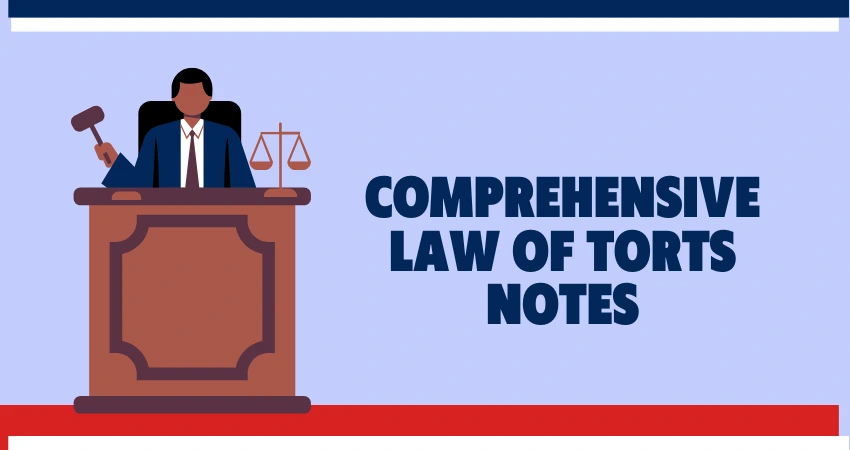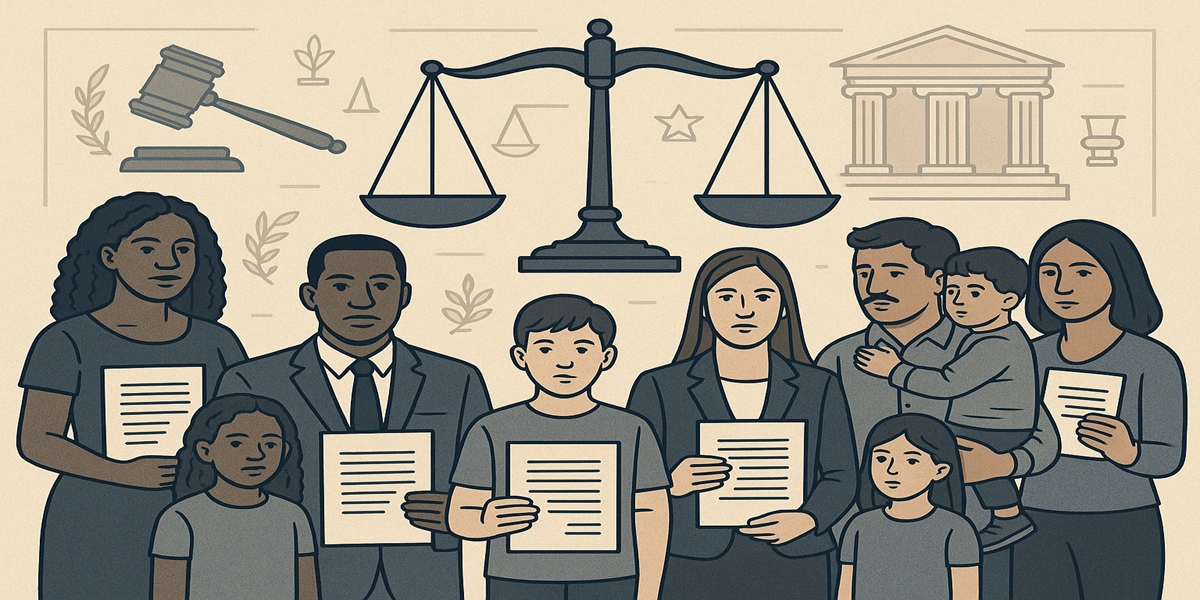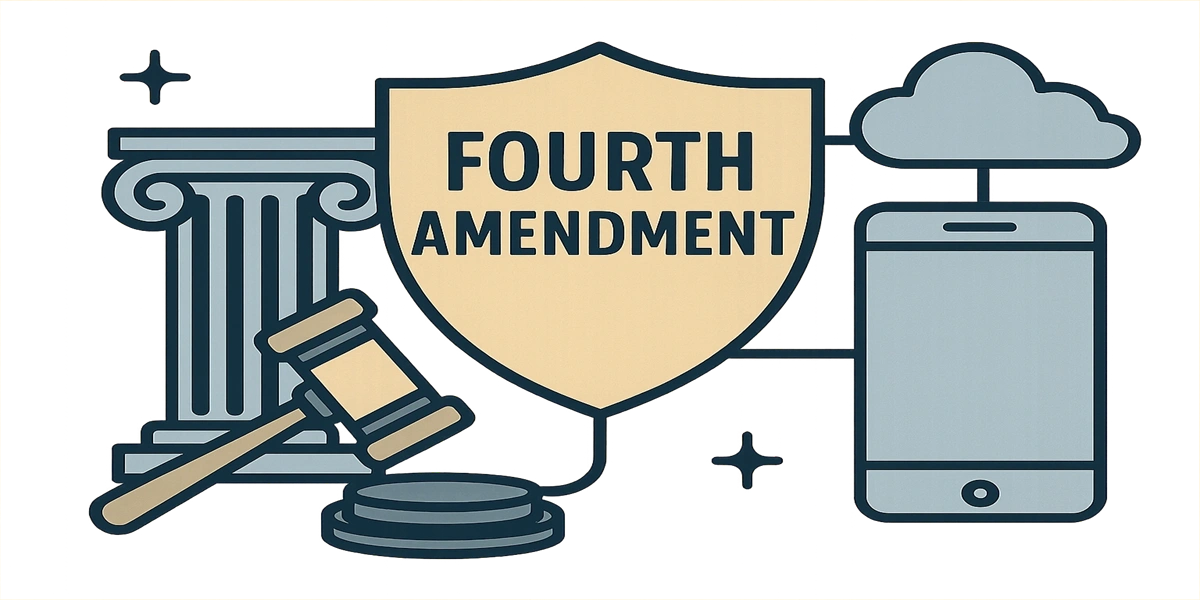While preparing for your exams or exploring the field of Torts, compiling detailed and organized torts notes and study resources helps to impact your success. With its broader sense and complex legal concepts, the law of torts addresses different topics like negligence, defamation, nuisance, and strict liability. Learning about these concepts is also important for students, legal professionals, and scholars.
Law of torts, originated from English common law, has developed through court rulings and legislative changes. It is founded on the principle’ Ubi jus ibi remedium’, which means a right without a remedy exists. This branch of law deals with civil wrongs that result in harm or loss to others, offering remedies through unspecified compensations separate from violations of contract or trust.
In this article, you will find important torts notes and case studies to learn about torts deeply. These materials will help you understand core concepts, navigate legal texts, and prepare efficiently for your papers. We will provide you with a well-organized summary of all aspects of torts, whether you are a beginner or an advanced learner.
What is the Law of Torts & Its Nature?
Torts are dealing with civil wrongdoing with a remedy through common law action for unspecified compensations, separate from disputes of contract or trust. Torts were derived from the Latin word ‘tortum,’ which means unethical actions. Law of torts is applied in India in the absence of distinct legislative laws.
Difference Between Tort & Torts
According to Winfield, any unjustified wrongful act is considered a tort. It emphasizes the illegal action itself. On the other hand, torts include particular wrongs that result in accountability under this law study, as Salmond stated. Liability applies only to specific torts.
Basic Principles of Law of Torts
- The defendant must have performed an action or failure to act that infringes upon a legal right held by the accuser.
- This action or failure to act must lead to legal harm that breaches the accused’s legal right.
- Both actions and failures to act can hold a person accountable in tort law if they are illegal.
- The action or failure to act must violate a legal obligation applied to the individual.
- Violation of a legal right without significant harm or loss to the accuser. Emphasizes the breach of legal rights.
- No legal action can be pursued in court if there is harm or loss to the accuser without breaching a legal right.
Examples
- Ashby v. White (Voter’s voting rights denied, no actual harm; defendant still held accountable)
- Bhim Singh v. State of J&K (MLA unlawfully imprisoned; awarded compensation).
- Gloucester Grammar School Case (Competition led to a loss but no breach of legal right; no remedy provided)
- Mogul Steamship Co. v. McGregor Gow and Co. (Freight reduction through competitive methods; lawful actions taken)
Cases
- Chesmore v. Richards: The defendants were not held responsible as they legally used underground water, which impacted the accuser’s mill.
- Town Area Committee v. Prabhu Dayal: Demolishing an illegally built structure was considered legal, irrespective of any harmful intent, if legal regulations were breached.
Types of Torts
-
Intentional Torts
The purpose is where the psychological factor is significant. For example, assault, battery, trespass, etc.
-
Negligence Torts
Involving carelessness where the mental aspect plays a role.
-
Strict or Absolute Liability Torts
Where the mental aspect is not considered. For example, in cases of strict liability or absolute liability offenses.
Difference Between Tort, Crime, and Breach of Contract
-
Crime
The government charges a public offense resulting from violating duties acknowledged by criminal law.
-
Violation of Contract
Failure to fulfill obligations specified in a contract falls under its violation.
-
Tort
Personal offense breaching obligations acknowledged by tort law, with the harmed part initiating legal action against the offender.
Qualities of Tort
- Personal offense infringes on legal rights, with the harmed person initiating legal proceedings.
- Civil offense that can be resolved in tort cases, permitting the plaintiff to retract the lawsuit.
- Damages in torts are undetermined and not fixed in advance.
Case Studies
1. Peninsular and Oriental Steam Navigation Company v. Secretary of State for India (1868)
-
Facts
An incident happened when a worker at a government dockyard dropped heavy iron rods, creating noise that frightened a horse dragging a cart.
-
Held
The Secretary of State was held responsible since the upkeep of the dockyard was a non-sovereign responsibility.
2. Nobin Chandra Dey v. Secretary of State for India
-
Facts
The accuser alleged that the government violated a contract for a license to sell ganja.
-
Held
The High Court determined there was no contract violation, and even if there was, the action was a sovereign function, shielding the state from accountability.
3. Kasturi Lal v. State of Uttar Pradesh (1965)
-
Facts
The police confiscated the accuser’s gold and it was later taken by one of the officers.
-
Held
The Supreme Court-governed state was not responsible, as the capture was a sovereign activity.
-
Note
Later rulings have reduced the practical impact of this decision.
Read also: Nervous shock in tort law






